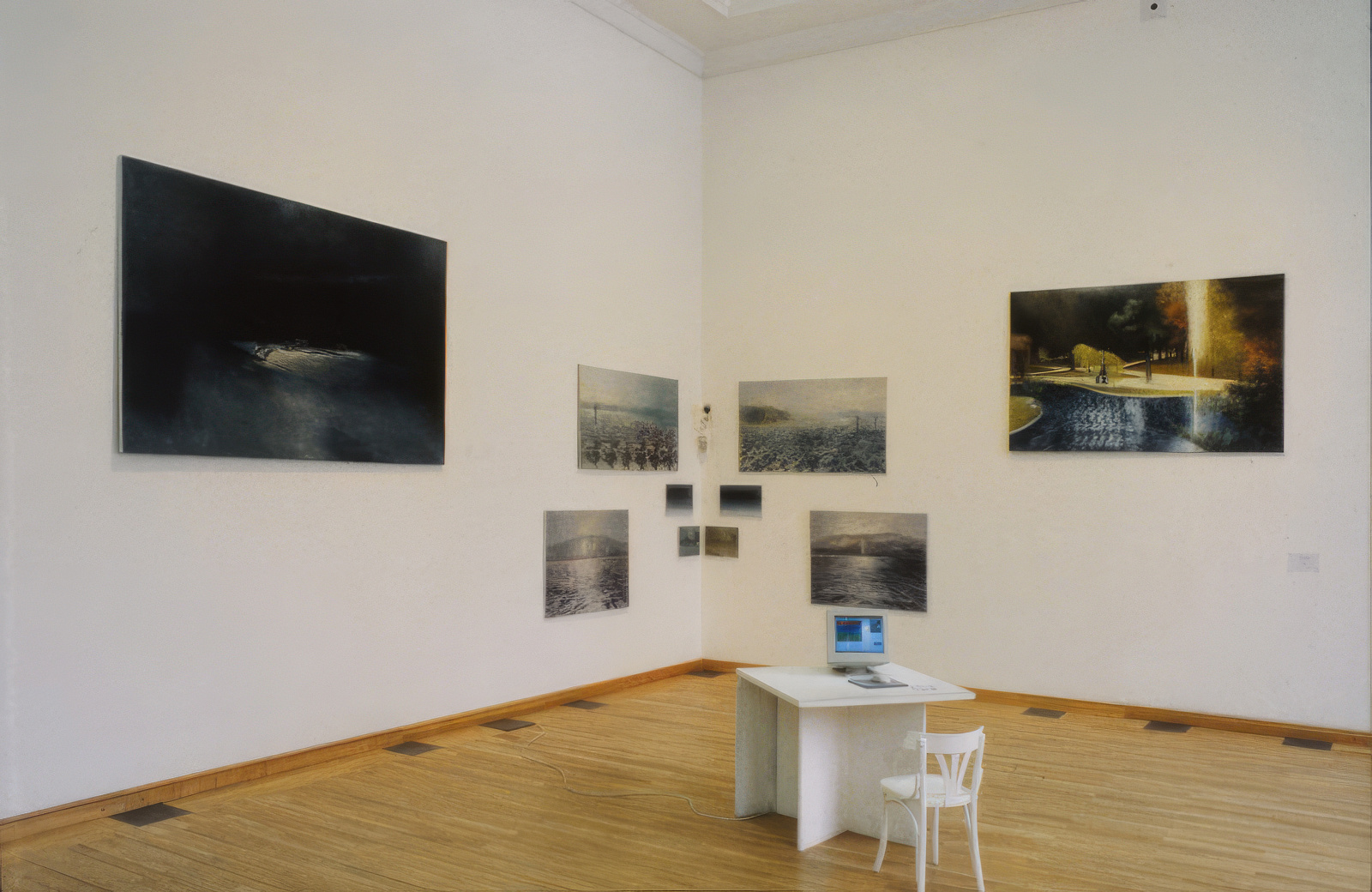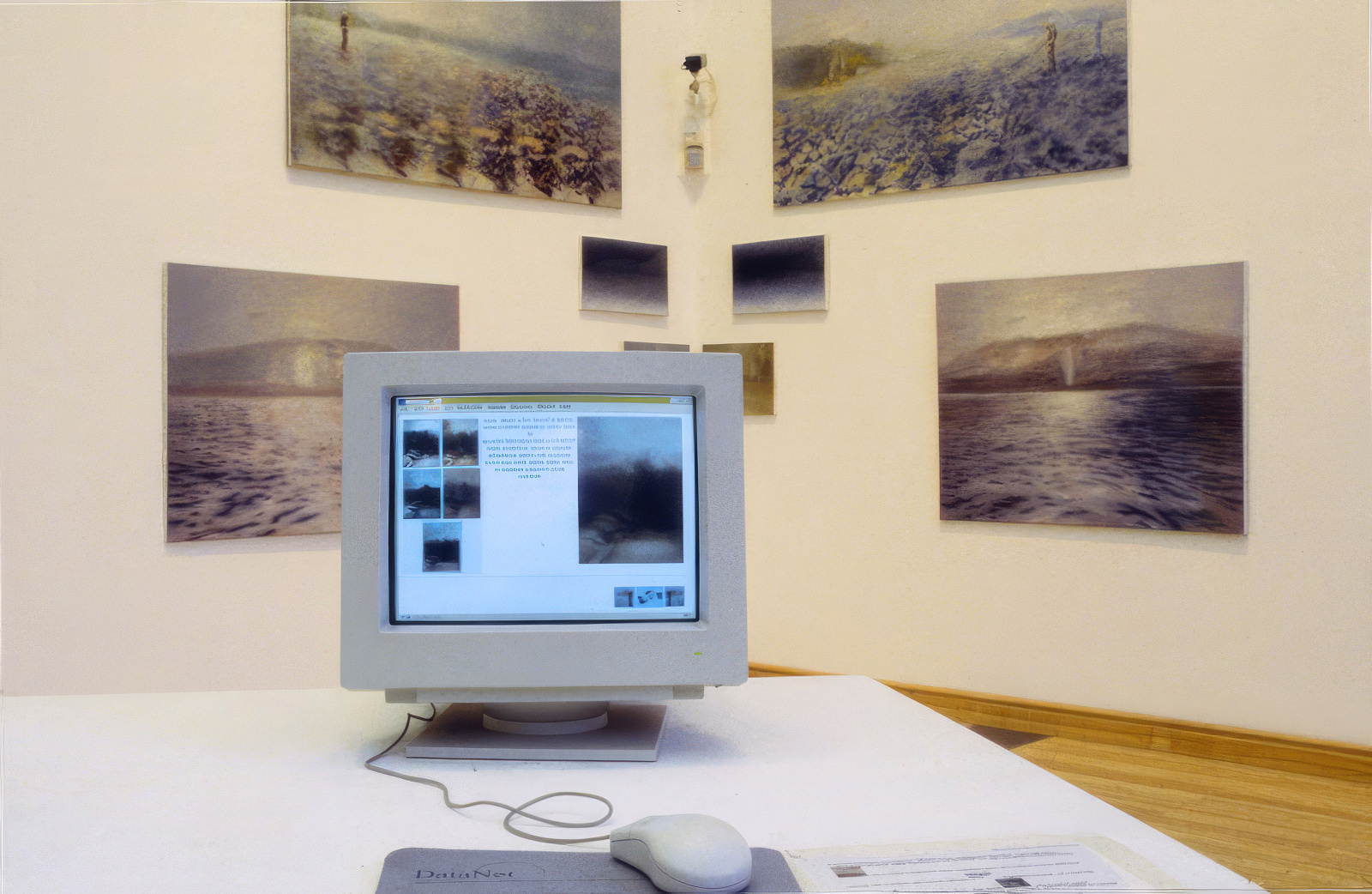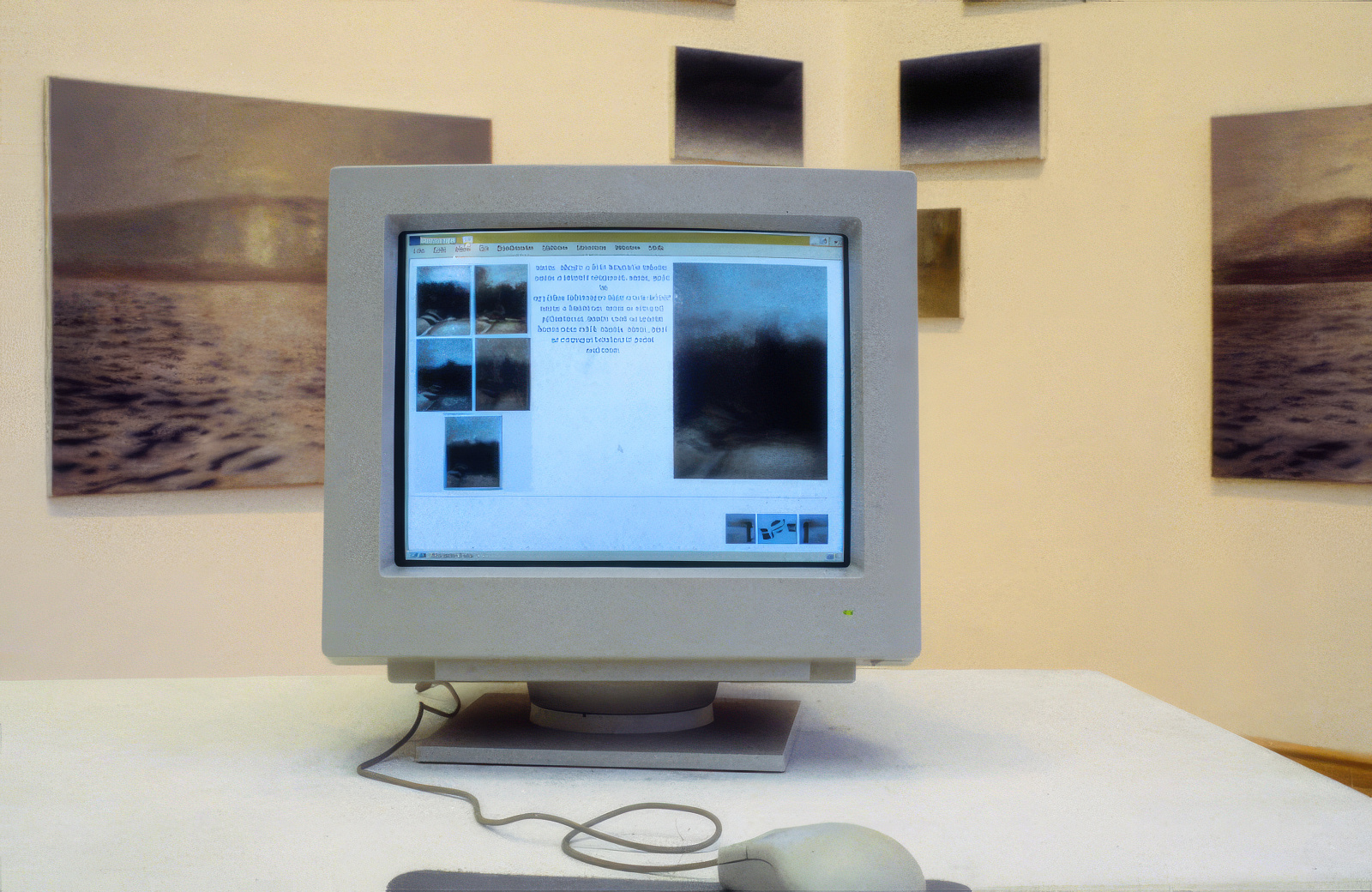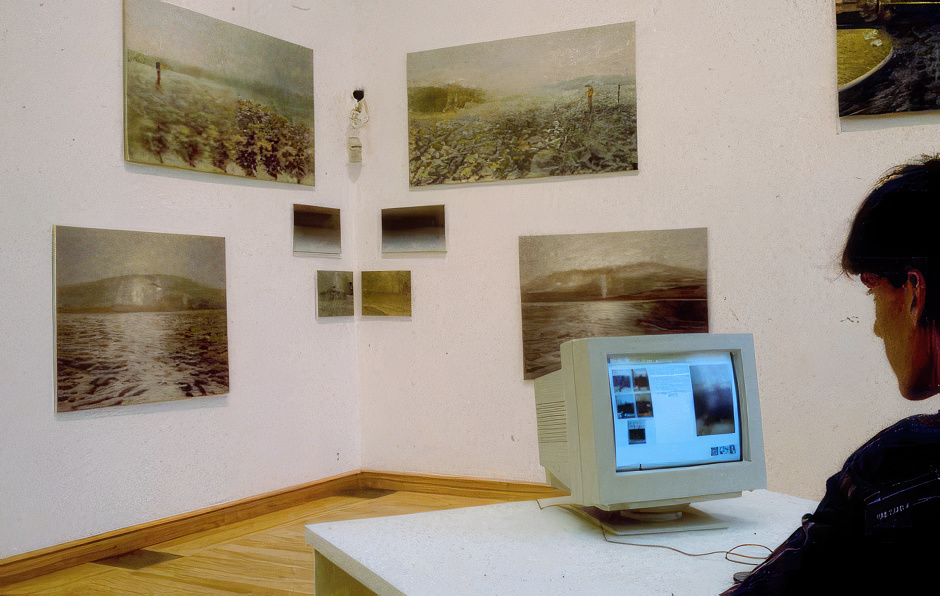THE BUTTERFLY EFFECT
The Butterfly Effect: The Coordinates of the Moment Before Discovery
(A Pillangó-hatás: A felfedezés elõtti pillanat koordinátái) was a series of international events organised by the Soros Center for Contemporary Arts Budapest, Intermedia MKE Budapest and Műcsarnok Budapest from 20 January - 25 February 1996 at Műcsarnok, Budapest.
Curators: Suzanne Meszoly - Program Director SCCA-Budapest, Miklós Peternák - Board member SCCA-Budapest.
Organising team: Zoltán Szegedy-Maszák, Andrea Szekeres, János Szoboszlai, Adéle Eisenstein, Helga Rajz, László Tölgyes, Lívia Páldi.
Dichotómia, Festmény-installáció, 1995-96
"A 'Dichotómia' olyan, részint egyedülálló, részint duplikált képek sorozatából áll, melyek külön-külön, vagy egymásra vonatkoztatva is értelmezhetők. A létrehozni kívánt látványszövedék egy - a képekben rejtve meglévő - „szuperinformáció" felszínre kerülését vagy legalább ezen információ meglétének felismerését hivatott elősegíteni. A kívánt hatás egy olyan sztereó kép, mely nem annyira a látás szervét - a szemet - veszi igénybe, hanem egy feltételezett gondolati aktus révén mint belső kép keletkezik az agyban, utalva ezzel a gondolkodásnak - sőt az ezt megelozni látszó percepciónak is - elsődlegesen intuitív jellegére. (...) Lehetséges, hogy a tudat állandó és önkéntelen figyelő állásba kényszerítettsége az akadálya egy - a részekből összeálló - ismeretlen kép meglátásának? És végezetül: keltheti-e ez a feltételezett kép - részben a sztereogramokban rejlő képekhez hasonlóan - új, általunk nem ismert dimenzió érzetét?"
"'Dichotomy' consists of a series of partly unique and partly duplicated images, which can be interpreted separately or in relation to each other. The visual fabric to be created is intended to bring to the surface a hidden "super-information" in the images, or at least to recognize the existence of this information to promote. The desired effect is a stereo image that does not so much use the organ of vision - the eye - but is created as an internal image in the brain through an assumed act of thought, thus referring to the primarily intuitive nature of thinking - and even the perception that seems to precede it . (...) Is it possible that the consciousness being forced into a permanent and involuntary position of observation is the obstacle to seeing an unknown image - assembled from parts? And finally: can this supposed image - partly similar to the images inherent in stereograms - create a sense of a new dimension unknown to us?"
Szűcs Attila, Budapest, 1995



